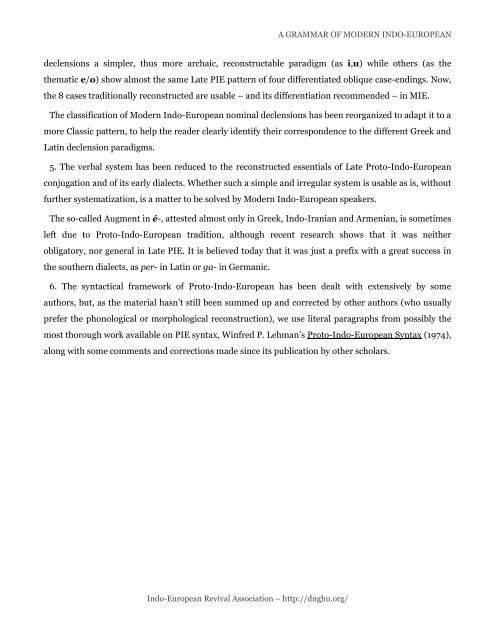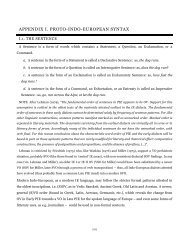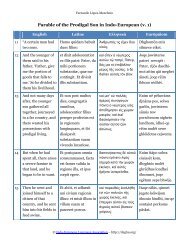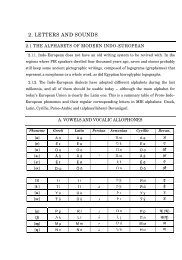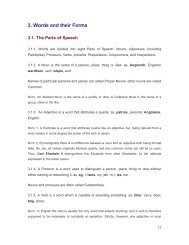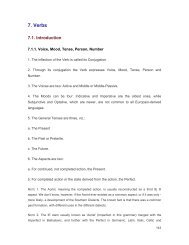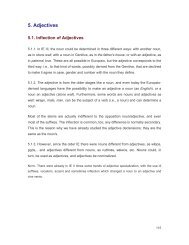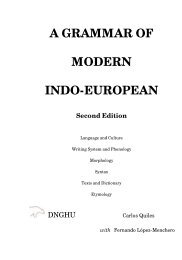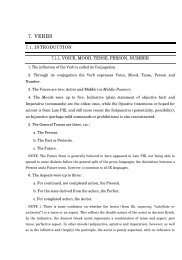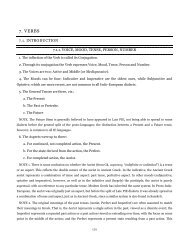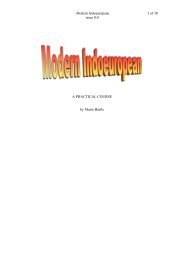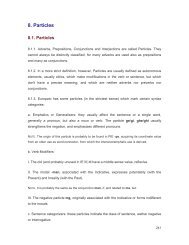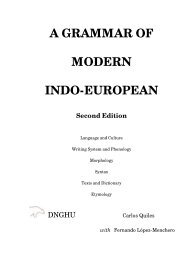You also want an ePaper? Increase the reach of your titles
YUMPU automatically turns print PDFs into web optimized ePapers that Google loves.
Indo-European Revival Association – http://dnghu.org/<br />
A <strong>GRAMMAR</strong> <strong>OF</strong> <strong>MODERN</strong> <strong>INDO</strong>-<strong>EUROPEAN</strong><br />
declensions a simpler, thus more archaic, reconstructable paradigm (as i,u) while others (as the<br />
thematic e/o) show almost the same Late PIE pattern of four differentiated oblique case-endings. Now,<br />
the 8 cases traditionally reconstructed are usable – and its differentiation recommended – in MIE.<br />
The classification of Modern Indo-European nominal declensions has been reorganized to adapt it to a<br />
more Classic pattern, to help the reader clearly identify their correspondence to the different Greek and<br />
Latin declension paradigms.<br />
5. The verbal system has been reduced to the reconstructed essentials of Late Proto-Indo-European<br />
conjugation and of its early dialects. Whether such a simple and irregular system is usable as is, without<br />
further systematization, is a matter to be solved by Modern Indo-European speakers.<br />
The so-called Augment in é-, attested almost only in Greek, Indo-Iranian and Armenian, is sometimes<br />
left due to Proto-Indo-European tradition, although recent research shows that it was neither<br />
obligatory, nor general in Late PIE. It is believed today that it was just a prefix with a great success in<br />
the southern dialects, as per- in Latin or ga- in Germanic.<br />
6. The syntactical framework of Proto-Indo-European has been dealt with extensively by some<br />
authors, but, as the material hasn‘t still been summed up and corrected by other authors (who usually<br />
prefer the phonological or morphological reconstruction), we use literal paragraphs from possibly the<br />
most thorough work available on PIE syntax, Winfred P. Lehman‘s Proto-Indo-European Syntax (1974),<br />
along with some comments and corrections made since its publication by other scholars.


